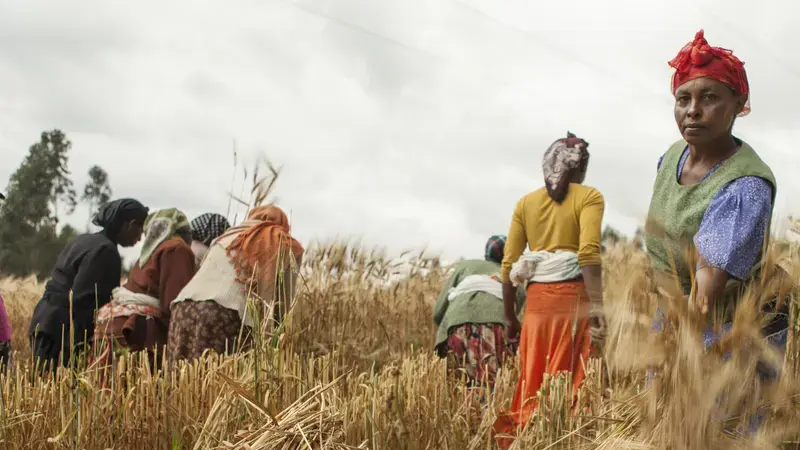When women farmers lead the way

Aselefech Telila is a farmer and enjoys her role as the head of a smallholder women farmers’ association in Welmera district in the Oromia region of Ethiopia. But her job was tough. The farmers in the community grow barley but barely produced enough to meet their own household needs. The local variety of barley seed gave poor yields and were susceptible to diseases. Livelihood was a struggle and families were resorting to selling their cattle to sustain themselves.
Life began turning around for Aselefech and her group of farmers when the Ethiopian Institute of Agricultural Research reached out to them with help – training on best farming practices and crop management, and new improved barley seed varieties for their fields.
A research partnership of ICARDA with the Ethiopian Institute of Agricultural Research (EIAR) has been working to overcome production constraints in barley in the country. ICARDA’s barley crop improvement research has been providing germplasm to develop higher-yielding and disease-resistant varieties, while building the country’s capacity. A resulting new variety, HB 1307 – a cross between ICARDA’s germplasm and a local variety – has demonstrated superior performance both in yield and disease resistance and was approved for release to the farmers.
The new improved barley variety was first introduced to Aselefech and her group of 25 smallholder women farmers with prior training in crop management practices through the extension and research program. The ‘package’ ramped up the farmers’ yields from less than 1 tonne per hectare to up to 6 tonnes per hectare.
The seed produced by the women were distributed to benefit more women farmers in the area and the new variety and management package demonstrated to men and women farmers across the community through farmer field days.
Today the women’s association has rapidly grown from 25 to 250 members and they have become role models in their community. Barley production in the district has increased from 10 tonnes to 60 tonnes per year. Over 90 percent of smallholder farmers in the district are not only producing enough for their own needs but are also able to sell their surplus in the market to generate income.
Did gender play a role in the success of technology dissemination?
According to Bezaiet Dessalegn, a gender expert and monitoring and evaluation specialist at ICARDA, “the project results point to the critical importance of understanding the role of women and men in farming for both development and dissemination of technology.” She explains, “In this particular case, women were suffering from poor harvests as they cultivate barley, use it in their foods and also take care of livestock. The improved barley seed directly solves their problems, which explains the large success with technology uptake when we started out with training women farmers”, says Dessalegn.
The women have been applying all that they learnt on their farms and continue taking the monthly and biannual training with EIAR.
For Aselefech, this success means that the farmers are earning more and can take better care of their homes and children. She also quietly enjoys another achievement – the victory for women in her community where women farmers often don’t have a voice and not recognized as skilled farmers. “Even men are coming to us to improve their productivity” she beams.
According to FAO, a substantial gain in food production can be achieved by closing the gender gap in agriculture. Yields on women’s farms suffer from fewer inputs and less access to important services such as extension advice. With improved access, women could increase their yields by 20 to 30 percent.
